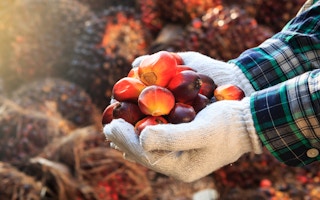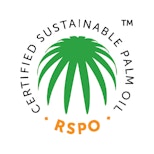Widely blamed for deforestation and human rights abuses in Indonesia and Malaysia, palm oil companies have been investing heavily in technology to boost their sustainability credentials—but are these efforts enough to safeguard a future for the industry?
In the wake of last year’s moratorium on palm oil expansion in Indonesia, the world’s largest producer of the commodity, the pressure for companies to do more with less is higher than ever.
So is the need to protect the world’s most widely consumed edible oil from climate change and the increasing prevalence of pests, and the often forgotten part of the palm oil story—the people who grow it.
One innovation to achieve the latter is Ulula, a partnership between the Roundtable on Sustainable Palm Oil (RSPO), the industry largest certification body, and Ulula, a supply chain management firm.
Ulula, which means reveal in Chichewa, is a tool for firms and workers to monitor working conditions on plantations, a tall order given the complexity and scale of palm oil operations.
Companies such as Indofood Agri have come under recent scrutiny for labour abuses, prompting major brands to cut ties with them following campaigns from green groups. Ulula seeks to help address human rights abuses by giving workers a platform to anonymously submit complaints via a simple feature phone.
Complaints can be followed up by RSPO, which will conduct a survey to assess the complaint’s validity and the risks of coaching and retaliation. Ulula is being trialed by several growers with the aim of rolling it out this year.
“We’re trying to gauge sentiment and give companies the tools to learn from and educate their workforce in advance of issues. The biggest challenge is finding more companies that want to trial the technology, but we think it’s going to be a game-changer,” says Dan Strechay, RSPO’s interim director of outreach and engagement.
Boosting yield
A key challenge for the palm oil trade is increasing yield productivity per unit area, and companies have been working on technologies that work throughout the production chain, from planting materials to finished product.
Palm oil giant Sime Darby Plantation released its new high-yielding oil palm genome, Genome Select, in 2016 that promised to triple the industry average, giving a yield of about 11.5 tonnes of crude palm oil (CPO) per hectare per year.
The improved second version is cheaper, more climate-resilient and potentially tolerant to Ganoderma, a common fungal disease.
At one per cent of the cost, Harikrishna Kulaveerasingam, chief research and development officer of Sime Darby, tells Eco-Business that 500 hectares of the new version were already planted in 2018.
These materials respond quickly to the unpredictable weather patterns caused by climate change—less affected by the increasing drought in Indonesia and Malaysia and the “rain bombs” that make plantations inaccessible by road.
Mapping change
Non-profit group World Resources Institute (WRI) focuses its efforts on spatial information and monitoring, providing real-time information on forests on an interactive online platform, Global Forest Watch (GFW). This covers daily information about forest fires, all the way to longer-term climate trends.
WRI’s latest upgrade of GWR is GFW Pro, which moves away from a one-off analysis to a protected log-in based system where organisations can upload information that is shared across selected multiple users. GFW Pro is used by RSPO to map the concession areas of member growers with its GeoRSPO map builder app. The app enables civic society groups and other public stakeholders to better track the progress of RSPO members.
While its main focus is on land use change and deforestation, Anne Rosenbarger, Southeast Asia commodities manager at WRI shares that the long-term vision for GFW includes consolidating more information targeted at palm oil companies, for example, data on yield and water risks, under one platform.
WRI is also currently exploring radar-based imagery to penetrate cloud cover, although it is still at the strategy and fundraising phase, says Rosenbarger.
The current technology to deal with cloud cover is the usage of drones for palm counting, monitoring the plantations’ health and the detection of diseases or nutrient deficiencies, says a spokesperson at Golden Agri-Resources (GAR), a large palm oil firm. Obtaining accurate information on the plantation enables companies to adjust the inputs needed for maximum yield.
At the last stage of the production chain, Sime Darby has been developing technology in the oil mill to improve the oil extraction rate. The current technology extracts 20-21 per cent on average, and the new machines are looking at increasing the extraction rate by about 1 per cent, though it is still being tested.
What’s the hold up?
As a perennial crop that bears fruit only after three years, palm oil presents many complexities that have delayed the deployment of technology to optimise yield.
Kulaveerasingam tells Eco-Business that even with the new version of Genome Select, it is difficult to validate the information until “we stick it in the field, and see how it performs over many years.”
“All of these trials that you can run in the nursery are not foolproof,” he adds. The size of mature trees means that they are unable to be put in a growth chamber, and companies can only experiment with small palms.
Big companies are also impeded by the sheer scale of their operations, says Kulaveerasingam. For example, Sime Darby requires 25 years to fully replant all 315,000 hectares of its plantations with a replanting rate of 4-5 per cent per annum.
It will only see significant impacts on its bottom line after 2023, as the difference between the new and current materials will become more apparent. This will also be the year that the company will make the decision to put the planting materials into commercial production, after 4 years of collecting yield data.
Echoing Kulaveerasingam, Rosenbarger shares that “the challenge is interpreting the data for GFW over such a large area of land, in a cost-efficient way, and on a regular basis.”
“
We are losing rainforests at too fast a rate. We need to stop the expansion of existing plantations. That could be done by increasing yield or more holistic growing practices.
Emma Rae Lierley, forests communications manager, Rainforest Action Network
What’s next?
Anita Neville, vice president of corporate communications and sustainability relations at GAR notes that currently original-equipment manufacturers (OEM) are not focused on palm oil but more on conventional agriculture in developed markets, hence a lot of new developments are driven by individual companies and not shared with the whole industry.
The next step is for closer collaboration between industry and technology developers to speed up the development and implementation of new technologies, agreed a spokesperson at Wilmar International, a Singapore-headquartered palm oil trader.
A new technology at the peak of its hype cycle is blockchain, and palm oil executives have been thinking about how to apply the distributed ledger network to tackle one of the industry’s biggest challenges - traceability.
Palm oil buyers need to know exactly where the oil came from, to be sure that it wasn’t grown on deforested or burned land—and blockchain could provide that certainty. But for now, blockchain doesn’t work for commodities like palm oil, says RSPO’s Strechay.
“Once it [palm oil] is mixed in large holding tanks with other sources and goes into the supply chain, the blockchain and its inherent traceability is lost.
“That’s the challenge for applying blockchain to bulk commodities. But blockchain is coming, we just need to figure out how to apply it to the appropriate part of the supply chain.”
Another application could be verifying certification for smallholders, but that could come with a cost. “It’s [Blockchain] not free, and that could prove a barrier to smallholders. Any new system has to be right-sized for smallholders. We should be in the business of growing their income not requiring them to spend money.”
Better use of old tech
But Rosenbarger tells Eco-Business that greater implementation of existing technologies is the most pressing concern. “Getting these tools into the hands of the small and medium companies, or one step further, the smallholders remains a challenge we have to overcome,” she says.
There is a stark difference in yield and planting management practices that use technologies between the big companies and the smallholders, who produce 40 per cent of the world’s palm oil, she stresses.
Without engaging with the latter, the impact and effectiveness of technologies are restricted and the growing demand for palm oil may not be met.
Emma Rae Lierley, forests communications manager at green group Rainforest Action Network (RAN) adds that companies should focus on holistic growing practices, as it is the “lack of willpower, not technology” that has contributed to large-scale deforestation.
It remains to be seen whether the technology being developed will be fast enough to curb the rate of deforestation, the speed of climate change, or the rate of peatland subsidence, but innovators remain optimistic.
“It’s never fast enough, but I think there is incredible optimism in terms of all the technologies we are looking at now. We are now knowledge-driven, and only intervene with full knowledge of the consequences,” says Kulaveerasingam.













